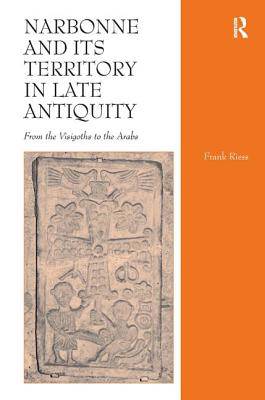
- Retrait en 2 heures
- Assortiment impressionnant
- Paiement sécurisé
- Toujours un magasin près de chez vous
- Retrait gratuit dans votre magasin Club
- 7.000.0000 titres dans notre catalogue
- Payer en toute sécurité
- Toujours un magasin près de chez vous
Narbonne and Its Territory in Late Antiquity
From the Visigoths to the Arabs. Frank Riess
Frank Riess
Livre relié | Anglais
305,45 €
+ 610 points
Description
This work centres on the post-Roman period of Narbonne and its territory, up to its capture by the Arabs in 720, encompassing not only recent archaeological findings but also perspectives of French, Spanish and Catalan historiography that have fashioned distinct national narratives. Seeking to remove Narbonne from any subsequent birth of France, Catalonia and Spain, the book presents a geopolitical region that took shape from the late fifth century, evolving towards the end of the eighth century into an autonomous province of the nascent Carolingian Empire. Capturing this change throughout a 300-year period somewhat lacking in written sources, the book takes us beyond an exclusive depiction of the classical city to an examination of settlement in various forms. Discourses of literary criticism also lie behind aspects of this study, mapped around textual commentaries which highlight a more imaginative biography of a city. Narbonne's role as a point of departure and travel across the Mediterranean is examined through a reading of the correspondence of Paulinus of Nola and the writings of Sulpicius Severus, enabling the reader to gain a fuller picture of the city and its port. The topography of Narbonne in the fifth century is surveyed together with Bishop Rusticus's church-building programme. Later chapters emphasise the difficulties in presenting a detached image of Narbonne, as sources become mainly Visigothic, defining the city and its region as part of a centralised kingdom. Particular attention is given to the election of Liuva I as king in Narbonne in 568, and to the later division into upper and lower sub-kingdoms shared by Liuva and his brother Leovigild, a duality that persisted throughout the sixth and seventh centuries. The study therefore casts new light on Narbonne and its place within the Visigothic Kingdom of Toledo, suggesting that it was the capital of a territory with roots in the post-Roman settlement of barbarian successor states.
Spécifications
Parties prenantes
- Auteur(s) :
- Editeur:
Contenu
- Nombre de pages :
- 304
- Langue:
- Anglais
Caractéristiques
- EAN:
- 9781409455349
- Date de parution :
- 31-10-13
- Format:
- Livre relié
- Format numérique:
- Genaaid
- Dimensions :
- 160 mm x 234 mm
- Poids :
- 544 g

Seulement chez Librairie Club
+ 610 points sur votre carte client de Librairie Club
Les avis
Nous publions uniquement les avis qui respectent les conditions requises. Consultez nos conditions pour les avis.






